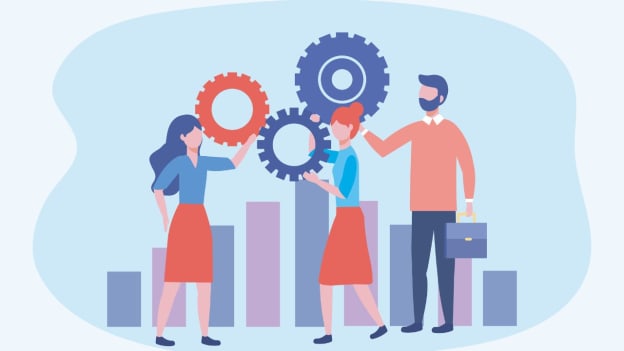How automation and AI-powered talent insights are accelerating modern hiring

Globally, 88% of companies have already integrated AI into their recruitment processes, reshaping how talent is sourced, evaluated, and hired. Back in 2022, analysts expected the AI recruitment market to reach $590.5 million by 2024. Whether that mark was hit or surpassed, one thing is clear: AI's role in hiring has only accelerated. In India, the momentum is especially strong, 60% of companies are already using AI in some form to streamline recruitment, and LinkedIn data shows that 70% of Indian HR professionals continue to struggle to find qualified talent. Clearly, there’s a gap, and AI is beginning to bridge it.
The recruitment roadblocks: Time, bias, and broken experiences
Despite all the advancements, traditional recruitment processes still struggle with age-old challenges: time-consuming CV screenings, unconscious bias in decision-making, and impersonal candidate journeys. Many candidates drop off midway through complex applications or never hear back after initial outreach, leading to negative brand impressions.
To tackle these issues, companies are beginning to experiment with AI in creative and strategic ways. One global firm used AI to anonymise CVs and flag biased language in job descriptions, leading to more equitable shortlists. Another major tech company implemented an AI-enabled chatbot to respond to candidate queries in real time and capture initial screening data. As a result, application completion rates improved, and recruiters were able to move qualified candidates through the funnel much faster.
These examples point to a larger truth: AI isn’t just about automation. When thoughtfully applied, it becomes a tool for creating more inclusive, engaging, and efficient hiring experiences.
LinkedIn’s AI-powered tools: Helping recruiters move with precision
With its massive professional user base and deep talent insights, LinkedIn is uniquely positioned to bring AI into the hands of recruiters. Its suite of AI-powered enhancements is designed to do one thing exceptionally well: help recruiters focus on the right candidates faster.
The AI-assisted search feature is at the heart of this transformation. Recruiters can now use plain language or paste in a job description, and the system will instantly translate that into smart filters, eliminating the need for complex Boolean searches. This is particularly useful when refining hard-to-fill roles in niche sectors, where conventional keyword matches often fall short.
On top of that, LinkedIn now offers AI-generated candidate filter suggestions, helping recruiters sharpen their searches in real time based on evolving needs. These filters adapt dynamically, making talent acquisition not just more efficient but also far more intuitive.
The platform has also introduced flexible pipeline statuses, allowing teams to track candidate journeys in a way that aligns with their unique processes. Whether you’re scaling rapidly or hiring selectively, this visibility brings structure without rigidity.
And for organisations using Job Wrapping™ to import roles automatically, it pulls job listings from company’s career sites, suggests the right skills and job titles to optimise reach, and ensures that roles are seen by candidates who are most likely to be a match.
“The LinkedIn platform really helps us with accurate filtering—it’s completely AI-driven. It also assists in screening candidates, so we’re able to find the right talent at the right time.” — Venkatesh Raja, CHRO, Shopper’s Stop
From guesswork to insight: Predictive analytics in action
Beyond the search, AI’s strength lies in its ability to predict. Today, recruiters are leveraging AI-powered analytics to identify patterns in CVs, social profiles, and past job performance that signal a candidate’s likelihood to succeed in a particular role.
This kind of predictive insight does more than speed up hiring—it improves hiring quality. Instead of sifting through hundreds of profiles manually, recruiters can work from a curated shortlist of candidates who match both the role’s requirements and the company’s culture. Factors such as work history, communication style, and even soft skills can be analysed at scale to highlight high-potential individuals who might otherwise go unnoticed.
The benefits are tangible: hiring cycles shrink, quality of hire improves, and hiring mistakes become less frequent. More importantly, recruiters get to focus on what they do best—building relationships and crafting experiences that win top talent.
AI-driven engagement: Knowing who’s likely to respond
Even the most perfect match is only useful if the candidate is open to opportunities. This is where AI-driven engagement insights are beginning to play a bigger role.
LinkedIn and similar platforms now use behavioural data, such as profile updates, skills development activity, and messaging history, to predict which candidates are likely to engage. This allows recruiters to prioritise outreach to those who are actively exploring new opportunities, increasing response rates and reducing time spent on cold leads.
It also enables personalised outreach. By understanding a candidate’s career trajectory, recent activity, or interests, recruiters can craft messages that are more relevant and compelling. This kind of high-touch engagement, powered by data, is what gives hiring teams a competitive edge in today’s market.
AI is an enabler, not a replacement
AI is changing the recruitment landscape, but it’s not here to replace the human touch. Rather, it’s here to enhance it. In India and beyond, forward-thinking companies are already experiencing the benefits: faster sourcing, better matches, and a more inclusive hiring process.
As AI continues to evolve, the recruiters who succeed will be those who embrace it, not as a shortcut, but as a strategic partner. By combining data-driven insights with empathy, curiosity, and creativity, they’ll be able to build teams that are not only stronger but also future-ready.













